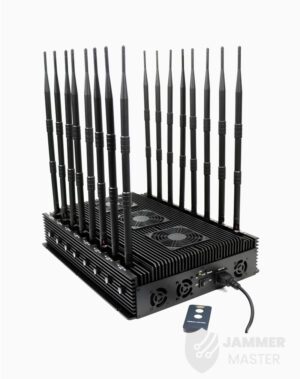
How to Build a GPS Jammer at Your Home
Here’s a step by step guide on how to build your own GPS jammer. Below are the main steps we are going to introduce in

In recent years, the use of prison jamming devices has become increasingly prevalent in correctional facilities. These devices are designed to block unauthorized cell phone signals within the prison walls, ensuring the safety and security of both inmates and staff. However, it is crucial to understand the differences between high and low power jamming devices and their impact on signal interference. This article aims to shed light on the importance of using both types of devices in conjunction to effectively address signal blind spots within correctional facilities.
Generally, prison jamming devices are available in a few high power models. In theory, high power amplifiers emit stronger radiation. While these devices offer a larger shielding radius, they may inadvertently interfere with areas that should not be blocked. This interference can be attributed to the extensive coverage area of high power devices, which may extend beyond the intended boundaries of the correctional facility.
Prison jamming devices are predominantly used in prisons and correctional facilities due to their ability to cover large areas. These devices are highly favored by customers as they require minimal installation and are easy to manage. However, within the confines of prison walls, the density of buildings and the composition of walls can affect the effectiveness of signal blocking, resulting in blind spots. To address this issue, it is recommended to simultaneously use high and low power jamming devices within correctional facilities. By utilizing low power devices in areas with signal blind spots, the problem of interference can be effectively resolved.

High-Power Portable Signal Jammer JM022 Jam Cellular/WiFi/GPS/LoJack
$780.00
24 Antennas Portable 5G Cellular Signal Jammer JM019
$1,150.00
Desktop 5G Cellular Signal Jammer Block Cellular/Wireless/GPS/LoJack JM006
$1,839.99
Mini GPS Jammer & Power Bank Block GPS/GLONASS & CDMA Signals JM015
$599.00Within the range of signal blocking, cell phones may display full signal bars, giving the impression of strong connectivity. However, in reality, these devices will not be able to establish any communication. The use of prison jamming devices does not interfere with the functionality of other electronic devices. This is because the electromagnetic signals emitted by these devices strictly adhere to the frequency bands regulated by the government, only disrupting cellular communication.
In conclusion, the use of prison jamming devices is crucial in maintaining the security and order within correctional facilities. However, it is essential to consider the differences between high and low power devices and their impact on signal interference. By employing a combination of high and low power jamming devices, correctional facilities can effectively address signal blind spots and ensure uninterrupted communication within authorized areas. It is imperative to strike a balance between signal coverage and interference to maximize the effectiveness of prison jamming devices.
Our frequency checker tool will help you check all frequency bands used in all country.

Here’s a step by step guide on how to build your own GPS jammer. Below are the main steps we are going to introduce in

In today’s digital age, our lives are more connected than ever before. We rely on our smartphones for communication, entertainment, and information. However, with this

Signal jammers are devices that deliberately transmit signals on the same frequencies as telecommunications and GPS devices, such as mobile phones, GPS trackers, and even

Understanding Signal Blocker: How It Works and Its Applications Signal Blockers are devices that can disrupt mobile phone signals, preventing them from connecting to base

The Application and Benefits of High-Power Signal Jammers Enhancing Signal Blocking Efficiency in Various Environments In today’s technologically advanced world, the need for effective signal

Considerations for Purchasing Exam Room Signal Jammers Ensuring Effective Signal Jamming for Exam Integrity As the year approaches its end, many schools are preparing for

The Importance of Monitoring and Signal Interference Measures During Examinations During examination periods, it is crucial to closely monitor the examination venues and their surrounding

Selecting the Appropriate Cell Phone Jammer for Theaters and Auditoriums Overcoming Challenges in Installation and Maximizing Signal Disruption The Importance of Cell Phone Jamming in

Remote Control of Cell Phone Jammers via Smartphone: A Possibility? With the rapid development of the Internet of Things (IoT), numerous smart home devices have

Supplying high quality signal jamming devices since 2010. The only jammer store you can trust.
Jammer Master © 2024. Premium Signal Jammer Supplier Since 2010.